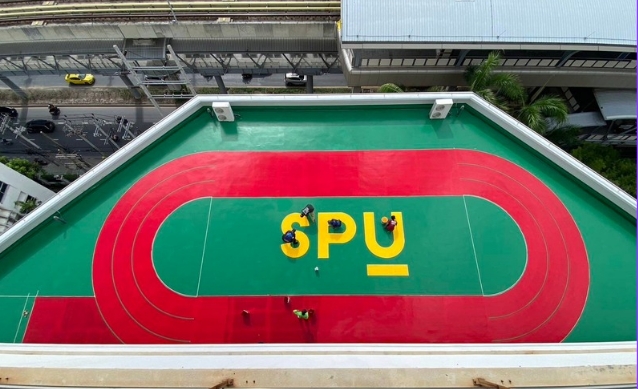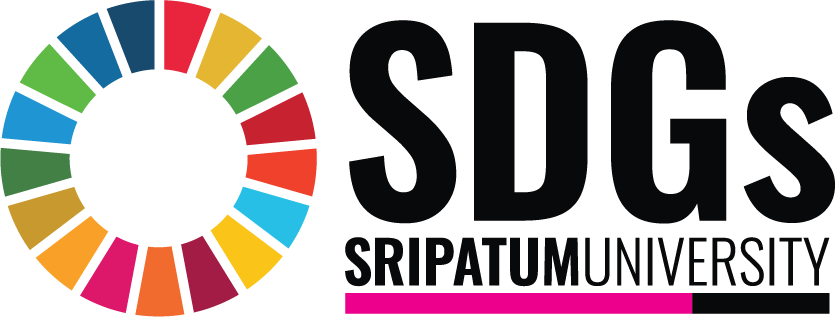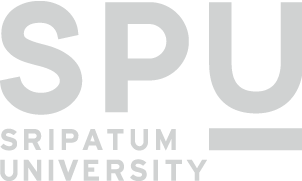Sripatum University (SPU) is advancing sustainable development by repurposing brownfield sites on campus. By transforming an unused area adjacent to Building 6 into a dedicated workspace for the Faculty of Engineering, SPU supports teaching and research activities without the need for new construction. Additionally, the mezzanine area on the 7th floor of Building 1 will be redeveloped into an outdoor space for student and staff activities, enhancing community and well-being.

These initiatives align with SDG 11.4.9, SDG 12, and SDG 13, as they promote sustainable land use, efficient resource management, and reduced environmental impact. By prioritizing the use of existing spaces, SPU demonstrates leadership in sustainable campus development, minimizing its ecological footprint while providing enhanced spaces for academic and social engagement.
This approach not only reflects SPU’s commitment to environmental responsibility but also fosters a culture of sustainable resource utilization, encouraging the community to innovate with existing resources for a greener future.
มหาวิทยาลัยศรีปทุม ก้าวสู่การพัฒนาที่ยั่งยืนโดยการนำพื้นที่บราวน์ฟีลด์ภายในมหาวิทยาลัย
มหาวิทยาลัยศรีปทุม ได้เปลี่ยนพื้นที่ที่ไม่ได้ใช้งานข้างอาคาร 6 ให้กลายเป็นพื้นที่ทำงานสำหรับคณะวิศวกรรมศาสตร์ ซึ่งรองรับการเรียนการสอนและการวิจัยโดยไม่ต้องสร้างอาคารใหม่ นอกจากนี้ บริเวณชั้นลอยบนชั้น 7 ของอาคาร 1 จะถูกพัฒนาให้เป็นพื้นที่กลางแจ้งสำหรับกิจกรรมและการพัฒนาทักษะของนักศึกษาและบุคลากร ซึ่งช่วยส่งเสริมความเป็นอยู่ที่ดีและการสร้างความสัมพันธ์ในชุมชน
โครงการเหล่านี้สอดคล้องกับ SDG 11.4.9 SDG 12 และ SDG 13 ซึ่งเน้นการใช้ทรัพยากรที่มีอยู่ให้เกิดประโยชน์สูงสุด การจัดการทรัพยากรอย่างมีประสิทธิภาพ และการลดผลกระทบต่อสิ่งแวดล้อม ด้วยการให้ความสำคัญกับการใช้พื้นที่ที่มีอยู่ SPU แสดงให้เห็นถึงความเป็นผู้นำในการพัฒนามหาวิทยาลัยอย่างยั่งยืน ลดรอยเท้าทางสิ่งแวดล้อม ในขณะที่เสริมสร้างพื้นที่สำหรับการเรียนรู้และการสร้างสรรค์ร่วมกัน
แนวทางนี้ไม่เพียงแค่สะท้อนถึงความมุ่งมั่นของ SPU ต่อความรับผิดชอบต่อสิ่งแวดล้อม แต่ยังส่งเสริมวัฒนธรรมของการใช้ทรัพยากรอย่างยั่งยืน โดยสนับสนุนให้ชุมชนหาวิธีสร้างสรรค์จากทรัพยากรที่มีอยู่เพื่ออนาคตที่เป็นมิตรต่อสิ่งแวดล้อม


